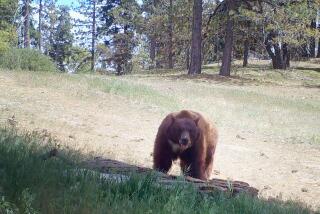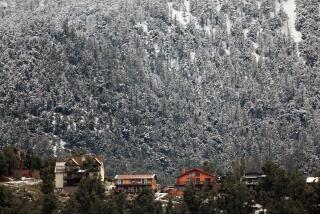Majority moves: Baboons make democratic decisions, study finds
Perhaps baboons should run for office. Researchers tracking a troop of wild olive baboons have found that the primates make travel decisions democratically when disagreements arise over which direction to go.
The findings, published in the journal Science, could help shed light on the evolution of group decision-making in a variety of social animals living in hierarchical structures -- humans included.
Researchers have long wondered how animals that live in complex social groups make collective decisions. For example, do certain members take the lead or not? How does a group decide what to do when two or more parties don’t agree?
In theory, animals like baboons make good case studies, because they’re complex individuals living in social hierarchies, and they stick together when they travel. Tracking how they decide where to go would be a good way to answer these questions.
But it’s exceedingly difficult to track that sort of decision-making in the wild, said study coauthor Margaret Crofoot, an anthropologist at UC Davis.
“When you’re out in the forest doing observational research, you’re not able to simultaneously collect data on all individuals in a social group at the same time,” Crofoot explained. “And so you’re limited in your ability to understand how these sorts of collective behaviors, these group behaviors, come about -- because you can only watch one animal at a time.”
To finally get a handle on the collective dynamics, the scientists went to Kenya to set traps for a troop of about 30 wild olive baboons near the trees in which they slept along the river. They outfitted 25 of the baboons with GPS-monitoring collars and released them so they could watch how the animals moved in the context of the group.
Using these collars, the scientists could track in a precise way what happened when a leading baboon first went, say, left or right -- and what happened if another baboon simultaneously decided to go another way.
The researchers found that the baboons decided which leader to follow based on two main criteria: how widely the two leaders diverged and how many others agreed with them.
If the angle between the two leaders’ paths was somewhat narrow (under roughly 90 degrees), then the baboons just compromised and split the difference, choosing a middle path between the two leaders. If the angle between the two was very wide, almost as if the animals were going in opposite directions, then the primates would choose one direction or the other.
And typically, majority ruled: Baboons would choose to follow the leader with the biggest posse, even if one group had just one more baboon than the other.
Social status in the group did not matter in the decision-making process. A baboon didn’t have to be an alpha male to get the group’s vote, and leaders could be either male or female. This highlights a difference between leadership and social status -- two roles that are often mistaken for one another, said Susan Alberts, a behavioral ecologist at Duke University who was not involved in the paper.
“When I heard [Crofoot] describe this project, I thought, ‘That’s never going to work,’ … and I’ve collared a few baboons,” Alberts said. “That really shows how bold and innovative they were, and kind of fearless in just saying, ‘Yeah, we can do this.’ It’s a big technical feat.”
The findings offer clues on how the best decisions for a group as a whole get made over time, and could one day point to possible underlying patterns in the group behaviors of many different species, from schooling fish to cooperation in human societies, scientists said.
“This phenomenon is very important to understand, because we do it in human societies and we don’t really know how it works,” Alberts said.
Follow @aminawrite for more wild science news from the animal kingdom.







